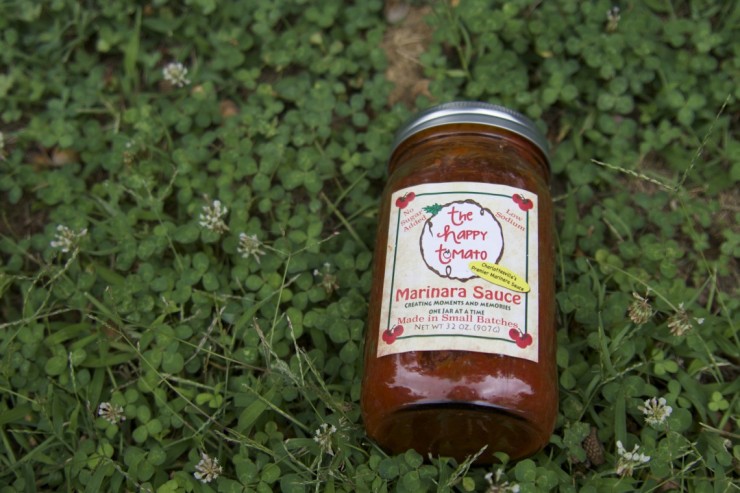
Hot Trends for a Cottage Food Operation
From Buy Local to Small Business Saturdays, from slow food to fancy food, from farm-to-fork to handmade artisan breads, more people than ever are demanding real food made by real people — not by machines in factories, the same way they make cars and computers.
The growth of farmers’ markets, specialty food products and farm-to-table restaurants that source their foods directly from farmers or food artisans reflects this hunger for foods with ingredients we can pronounce, made by people who live at places we could visit, maybe even in our home town. A cottage food operator can tap one or more of these business opportunities.
Below are a few of the most promising trends worth considering for a cottage food enterprise:
- Organics are growing 9 percent annually. More than 81 percent of US families say they are trying to buy some things organic, according to the Organic Trade Association. Total organic sales in the United States continue to rise, up nearly 10 percent annually and growing from $1 billion in 1990 to more than $26 billion in 2010, according to the Organic Trade Association.
- The specialty food business grew more than 22 percent between 2010 and 2012, according to the Specialty Food Association. The two most likely characteristics of new products include gluten-free food (38 percent) and convenient/easy-to-prepare items (37 percent).
- Farmers’ markets continue to grow, with a 3.6 percent increase from 2012 to 2013, totaling 8,144 markets in the US, according to the USDA’s Agricultural Marketing Service. What this means to cottage food operators is that there are more options at which you can sell and more customers eager to browse the aisles searching for unique products direct from producers like yourself.
- The cake and bakery market continues to rise at an average annual rate of nearly 5 percent, according to the industry research firm IBISWorld. The reason we’re eating so many cupcakes? While disposable income dropped during the recession, perhaps people turn to these luxury food items as an inexpensive way to indulge.
- Local is hot. Research from Sullivan Higdon & Sink’s FoodThink, “A Fresh Look at Organic and Local” 2012, finds that “70 percent of consumers would like to know more about where food comes from.” They found that local was hot: “The vast majority of consumers (79 percent) would like to buy more local food, and almost 6 in 10 (59%) consumers say it’s important when buying food that it be locally sourced, grown or made.” In most cases, you can’t get much more local than a product produced by a cottage food operator.
- Ethnic flavors continue to increase in popularity, particularly from Mexico and Latin American countries, according to the Flavor Forecast from McCormick & Co. Does your own family heritage offer unique specialty items folks can’t purchase elsewhere?
- Only 1 in 133 Americans are diagnosed with celiac disease, unable to tolerate gluten in their diet, according to the National Foundation for Celiac Awareness. But gluten-free appears to be the hot health trend with more than 30 percent of Americans claiming to avoid gluten, reveals the consumer research firm NPD Group. According to Mintel, another market research firm, the gluten-free product category will grow 48 percent from 2013 to 2015, reaching sales of $15.6 billion in 2016. Bakery items such as bread products, cookies and snacks hold the largest market share at nearly 24 percent.
Let’s be real. As more research findings surface on the improved health, nutrition and taste of products made from real ingredients, the greater the demand for these products made with no preservatives, artificial flavors or colors or mystery ingredients courtesy of the science lab. While laws labeling ingredients or products as containing genetically modified organisms (GMOs) have remained elusive, retailers are demanding transparency when federal and state governments do not. Whole Foods Market, for example, declared that by 2018, all products they sell must state whether they contain GMOs or not. Added to this are the growing issues more Americans have with respect to what they eat. Allergies or sensitivities to peanuts, soybeans, gluten and dairy products have exploded.
Cottage food enterprises address these growing trends, solving problems and meeting customer needs like few large corporations ever could. As a result, these micro enterprises often have a competitive advantage — beyond minimal regulations of the cottage food laws themselves. Their small size, direct connection and responsiveness to customer needs and attentive detail to each and every product are beyond large food companies. Cottage foods, by their very nature, are small batch, fresh and specialized. For a personal workshop that touches on all the basics for starting up and marketing a product produced in your home kitchen, we’re offering a two hour “Start a Food Business” course as a part of SOIL SISTERS: A celebration of Wisconsin Farms and Rural Life (http://www.soilsisterswi.org) on August 1.
Another bit of great news: Fewer and fewer Americans are being fooled by mega-food producers’ product labels that read fresh from the oven, all-natural, homemade goodness, artisanal. It’s much easier and simpler to trust the food you put in your body when you’re on a first-name basis with the person who made it.
The cottage food movement represents more than an income source or a fun new project. You’re helping to grow the local food movement in your community by providing “direct-to-the-food artisan” connections.
Finally, “homemade” and “fresh from the oven” mean exactly what’s written.